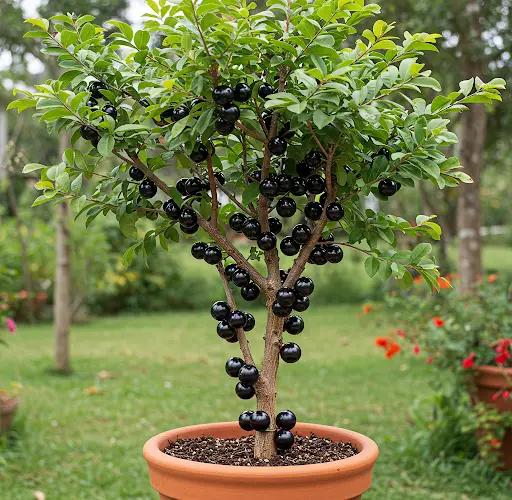How to Successfully Grow Jabuticaba in a Pot
Jabuticaba is one of the easiest fruit trees to grow in an apartment, as it adapts well to container cultivation, develops quickly, and can bear fruit multiple times a year. However, choosing the right variety and providing the best care are essential for ensuring faster fruit production.
Selecting the Right Jabuticaba Variety
Jabuticaba trees can take anywhere from a few years to nearly two decades to start fruiting, depending on the variety. The most common slow-growing variety is the Sabará Jabuticaba, which can take up to 18 years to bear fruit. Its leaves are smaller, darker, and thinner. On the other hand, the hybrid variety, which has larger and lighter-colored leaves, begins producing fruit within just two years. If you are looking for quicker results, opting for the hybrid variety is the best choice.
Choosing the Right Pot Size
To successfully grow a Jabuticaba tree in a container, selecting an adequately sized pot is crucial. A pot of at least 20 liters is necessary to allow for proper root development and fruiting. However, for optimal results, a pot of around 40 liters is recommended. A larger container provides more space for roots to spread, leading to a healthier tree and more abundant fruit production.
Sunlight Requirements
Jabuticaba trees thrive in full sun and require at least six hours of direct sunlight per day. The more sunlight the tree receives, the better its growth and fruiting potential. Ensuring proper placement in a bright spot will significantly improve its overall development.
Pruning for Better Growth and Fruiting
Pruning is essential for maintaining a well-shaped and productive Jabuticaba tree. Over time, as the roots fill the container, vertical growth slows down, and the plant starts expanding horizontally. Regular pruning helps to open up the canopy, allowing more sunlight and air circulation, which stimulates fruit production.
To encourage better fruiting, prune the tree to form an open, cup-shaped canopy. This method increases light penetration and airflow, preventing diseases and promoting vigorous growth. Jabuticaba trees tolerate pruning well, and it can be done at any time of the year without harming the plant.
Watering Requirements
Jabuticaba trees naturally grow in humid environments, so they require frequent watering. Unlike other fruit trees, they can handle high moisture levels without the risk of root rot. Watering two to four times a day is beneficial, especially during hot and dry periods. Keeping the soil consistently moist will enhance growth, support fruit production, and ensure a thriving tree.
Fertilization for Healthy Growth
While Jabuticaba trees do not have high nutritional demands, proper fertilization is necessary for maintaining a fertile and healthy growing medium. One of the best organic fertilizers for Jabuticaba is aged cow manure.
Aged manure is an excellent soil conditioner that provides essential nutrients such as nitrogen, phosphorus, potassium, sulfur, and zinc. More importantly, it contains beneficial microorganisms that improve soil health and aid in nutrient availability. Despite being a relatively mild fertilizer, it is highly effective for sustaining long-term plant health.
To maintain optimal soil conditions, apply aged manure once a month. Additionally, combining manure with other organic fertilizers can further enhance plant growth and fruit production.
Conclusion
Growing Jabuticaba in a pot is an excellent option for those with limited space. By choosing the right variety, providing a sufficiently large container, ensuring adequate sunlight and water, and using organic fertilization methods, you can successfully cultivate a healthy and productive Jabuticaba tree at home. Regular pruning and consistent care will reward you with a beautiful tree that produces delicious fruits multiple times a year.



